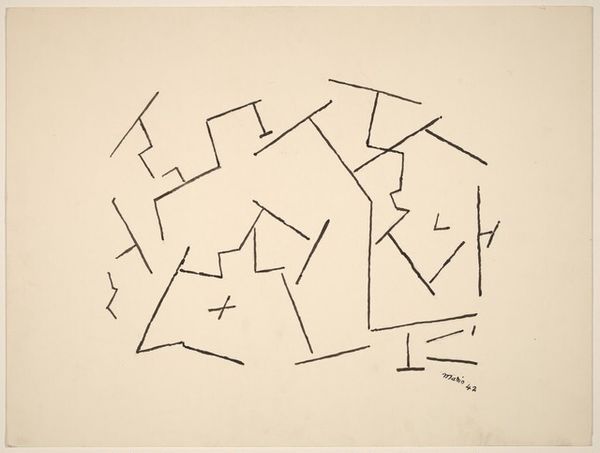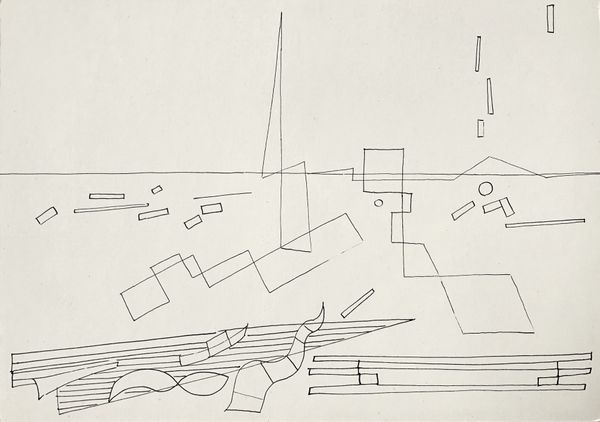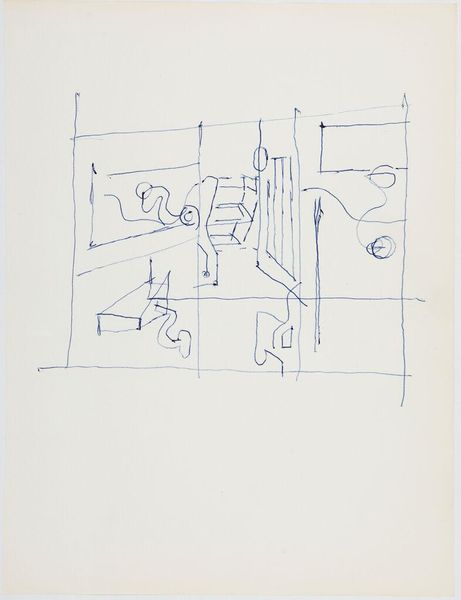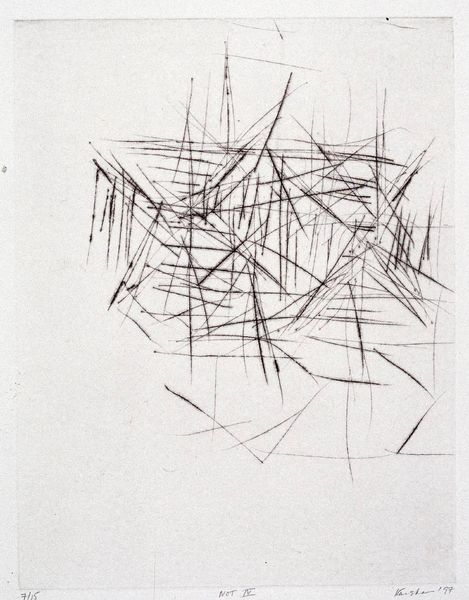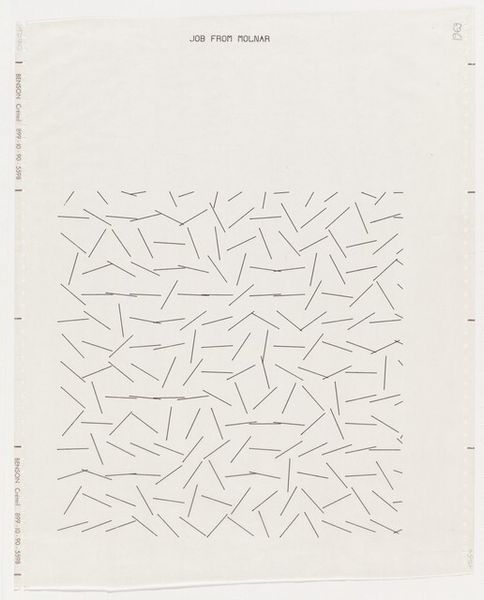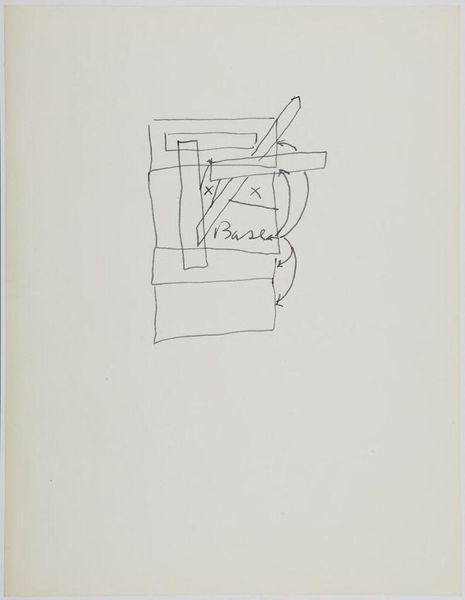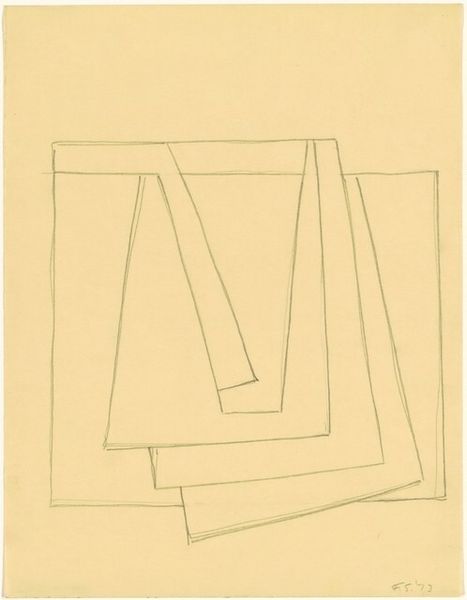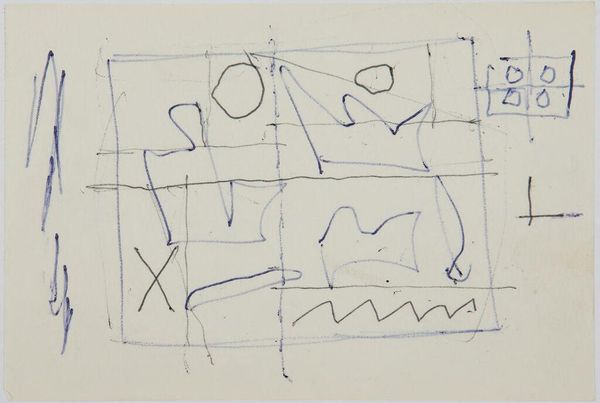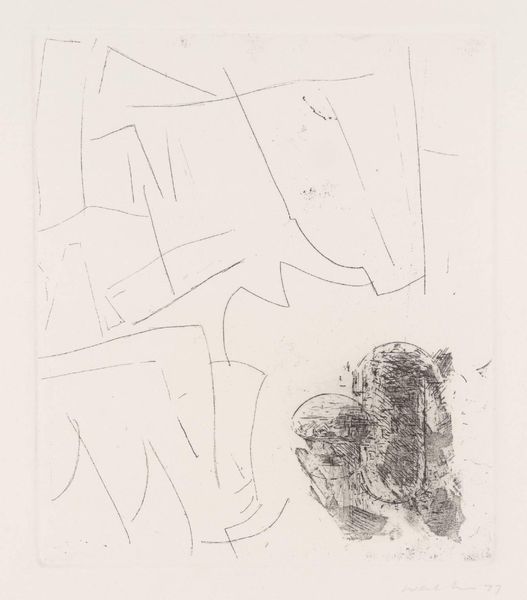
drawing, ink
#
drawing
#
conceptual-art
#
ink
#
geometric
#
abstraction
#
line
#
modernism
Copyright: Hryhorii Havrylenko,Fair Use
Curator: Well, this catches the eye, doesn’t it? Hryhorii Havrylenko’s "Abstract Composition," created in 1969 using ink on drawing paper. Editor: It feels almost like scattered thoughts—fleeting and disorganized. These rectangular forms… they remind me of building blocks, but disassembled. Curator: Given the context of the late 1960s, one could see this abstraction as a reaction to, or even a dismantling of, established social and political structures. Havrylenko was working within a Soviet system that demanded a certain level of conformity. This abstract approach, where concrete representation dissolves, could be interpreted as a form of subtle resistance. Editor: Absolutely, the fragmentation suggests a world breaking apart, or perhaps a new order struggling to emerge. Rectangles, often associated with stability, here lack grounding, direction. And look at how simply he renders each form, reducing them to pure, symbolic shapes, emphasizing the act of mark-making itself. Curator: Exactly! He’s distilling concepts to their most basic elements. Furthermore, conceptual art's broader purpose often involves questioning the nature of art itself, pushing the boundaries of what is considered acceptable. Within a Soviet framework, this experimentation with form and the questioning of established artistic conventions held significant social and political implications. It indirectly questioned authority and hinted at alternative modes of expression. Editor: And note the date scrawled at the bottom – "5.1.69." January 5th, 1969. What was he feeling, thinking, as he laid down these lines on that particular day? Is there some key we’re missing to unlock its full meaning? There is something very intimate about a date accompanying the work, turning it into a memento, an ephemeral yet deeply symbolic document of personal vision. Curator: It speaks to the conceptual shift occurring globally at that time, and, locally, to the development of Ukranian Nonconformist Art. Havrylenko’s drawing represents more than just personal expression, but a subtle commentary on freedom and control. Editor: Indeed. It’s a seemingly simple composition, yet profoundly evocative in its visual language and historic context. Curator: It really highlights how the personal and political can become intrinsically intertwined, communicated through abstract forms. Editor: And how a few carefully chosen shapes can hold so much unspoken meaning.
Comments
No comments
Be the first to comment and join the conversation on the ultimate creative platform.
